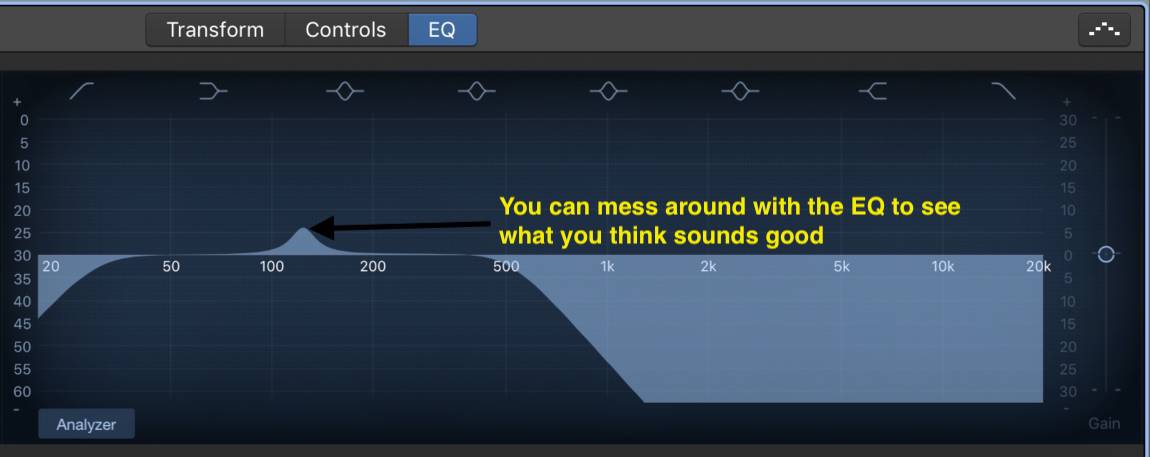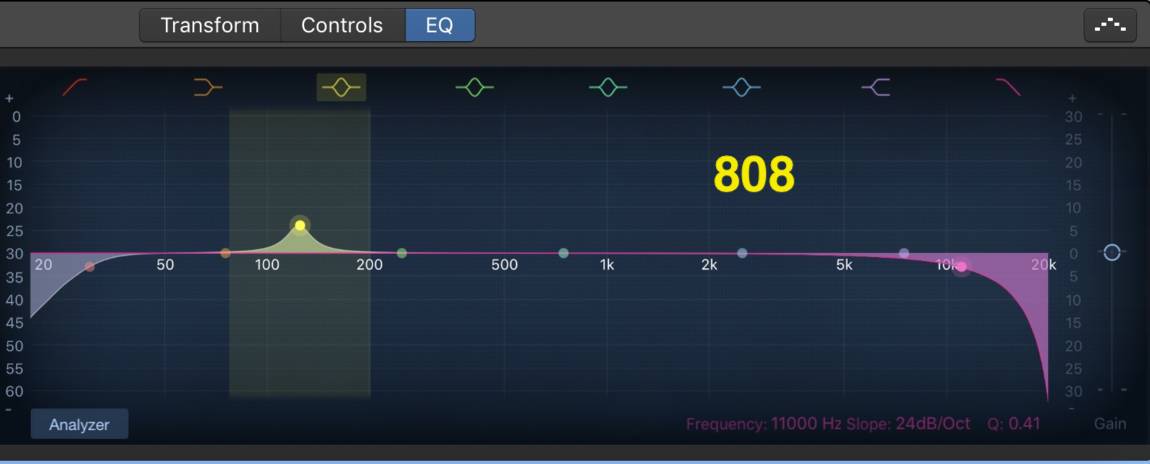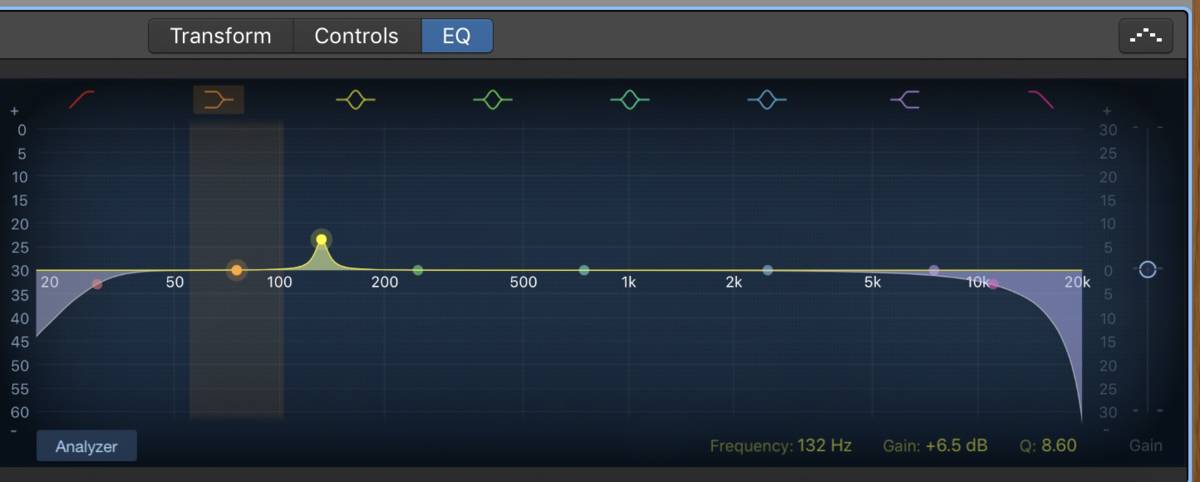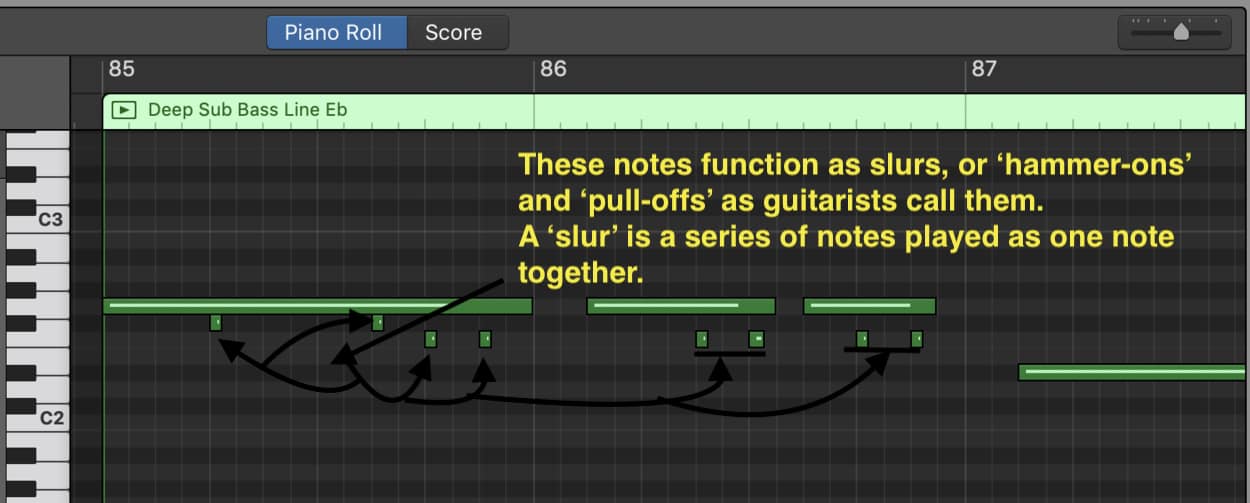Boutique 808’s are arguably the most coveted aspect of hip-hop production and in this tutorial today, I’m going to do my very best to try and share what I’ve learned about them. I’ve outlined the first five tips below, and then I explain them in more detail as well as five others later on in the article.
10 Tips for Making 808s in Garageband
1) Use the 808 Bass or Initial Audio’s 808 Studio II instead of the boutique 808s
2) Use Distortion
3) Line up your 808 notes with the kick drum
4) Use the EQ to edit out unwanted frequencies
5) Ensure your 808 is on-key by increasing the pitch by an octave.
There is a difference between a Bass Synthesizer and a Boutique 808. A Boutique 808 is an actual drum machine that one can buy and use, for instance, my personal favorite is Initial Audio’s 808 Studio II.
Contrary to what some hip-hop producers may believe, a boutique 808 is not just a plug-in that comes with your DAW. Like most of the plug-ins, they’re all based on a real-life piece of analog equipment, from the compressors, synths, and arpeggiators.
Taking its name from the Roland TR-808, it was one of the earliest drum machines, manufactured between 1980 and 1983. It allowed users to actually create their own rhythms, rather than just use the pre-sets already established by Roland.
Nowadays, everyone calls the bass “808’s” or “Boutique 808’s,” when in reality, they actually are referring to just the bass, and it’s not a Roland TR-808.
For instance, the ‘Deep Sub Bass’ synthesizer that comes with Logic Pro X and Garageband, is a popular option with music producers. When I first began making music, I always wondered why my bass never sounded like others’.
However, it turns out that what they often meant by “808” was actually just a Bass Synth, synchronized with the Kick of the Drum Kit/Drum Machine. It’s important to note though, that the majority of people still mean traditional 808’s when they use the term.
The Actual Tips
As I just mentioned…
1) Rather than using the Boutique 808’s in Garageband, instead, use the Deep Sub Bass, the 808 Bass, or Initial Audio’s 808 Studio II
Using the Deep Sub Bass Synthesizer allows for a ton of variability due to the fact it’s (sort of) like a piano, rather than the Boutique 808 which doesn’t ring out as much, or in other words, doesn’t have as much sustain.
a) To get the Deep Sub Bass Synthesizer, go into your “Software Instruments,” select “Synthesizer,” then “Bass.”Deep Sub Bass” is the 6th one from the top.

The next thing to do is to choose the “C2” Octave, that way the Deep Sub Bass is actually low enough. Try it out at “C5” that way you can hear what it sounds like at a much higher pitch. This will come in handy for later too.
You can see that whenever you play a note, it rings out for as long as you keep your finger on the key. In hip-hop, that’s how they often get that sustained bass sound.
For instance, if you check out my track below called “Romania,” you’ll notice the section where the Deep Sub Bass rings out but the Kick Drum kicks in a number of different times in the same note.
For added effect, I quickly start a new note but at the same pitch to match with the kick. The result of this is a “punchy” bass line synchronized with the kick.
Although, in many cases, what I end up doing, and this is a tip later on in the article, is I use slurs to accentuate certain parts of the kick while continuing to have the dominant note ringing out in the background.
Starting right when the video begins, you can see how the Deep Sub Bass with the kick actually sounds:
Moving on to the next tip…
2) Use Distortion
This is a pretty significant way of changing the sound of one’s Bass.
You can do a couple of different things with Distortion, you can either distort it beyond recognition if you want to make your song sound violent and super aggressive like some XXXTentacion tracks, or you can just add enough to make the Bass sound dirty.
I prefer to use just a little bit to give it a gritty, tough, sound. However, you’ll notice that by adding distortion to the track, the chance of clipping is much greater.
Be careful with distortion, otherwise, your bass will clip and it’ll sound terrible in the mix later (unless distortion is the effect you’re looking for).

a) To turn on the distortion, go into the Plug-in settings in the Smart Controls of Garageband, and then click the Arrow.
b) Distortion is the third option in the line of effects.
c) It’ll bring up all the different types of distortion. Now, I prefer to just use the one that says “Distortion,” and none of the other ones.
Maybe, you want to experiment with all of them and figure out the one that works best for you. You can see that when you add Distortion, it’ll give you three settings in total, “Drive,” “Output,” and “Tone.”

I prefer to keep Output and Tone untouched, and instead, turn up the drive bit-by-bit. However, you can use the “Output” setting to turn down the strength of the signal.
3) Line Up Boutique 808/Deep Sub Bass Notes With The Kick Drum.
As I explored in my other 808 tutorial, the next step is to line-up the Deep Sub Bass, or Boutique 808 if you prefer the sound of it, exactly with the Kick. This is a pretty big game-changer if you haven’t been doing this already.
While you don’t always have to do this, it makes the kick and bass sound thick and “punchy” when you do.
This should be pretty self-explanatory, but I’ll touch on it anyway. You want your Deep Sub Bass notes and your Kick notes to line-up on the exact same points of the Grid Line.

Tip: Usually, what I do, is I copy and paste the notes of the Kick and their positioning into the Deep Sub Bass “Track Region,” that way I can see precisely where the kick is when I’m creating the Deep Sub Bass.
When I copy and paste the Kick MIDI into the Deep Sub Bass region for reference, I count the grid line that the kick starts at, that way I know where to start the Deep Sub Bass.
It makes it a lot easier to see and isn’t so much of a problem then. I’m sure there’s a better way of doing this, so if you know of one, don’t be afraid to shout it out in the comment section below.
Another Tip: A great thing to do for clarification is to drag and drop the Deep Sub Bass/Boutique 808 region next to the Kick, just so you don’t have to scroll all over the place to make adjustments.
I find that it just allows you to jump between the two easily, and makes the process a whole lot smoother.
It sounds great to let the Bass Synth ring out, and let the Kick accentuate each part of it. Or, if you want that added punch, you can start a new Bass Synth note on each part of the Kick, just so it punches and has that ballsy sound.
4) Use The EQ To Edit Out Unwanted Frequencies
The next part, which many would say is the most important but I disagree, is the EQ. Personally, I don’t mess around with this that much, but a lot of people think it’s essential.
I’m more of the “Less is More”-type philosophy when it comes to mixing, mastering, and EQ. I’ve said this before in my EQ tutorial, but I feel like the more I dwell on something and adjust little knobs and plug-ins, the worse it ends up sounding at a later date.
It may actually be useful though to put in a low-pass, to get rid of those super low-frequency sounds that are barely audible and wind up competing for other frequencies, and thus, muddy up your mix.
Up to 50khz is usually enough for this, any more and one might end up EQing out the entire sound of the instrument.
a) Essentially, what you want to do here, is go into the EQ setting down in Garageband’s Smart Controls, select EQ, and then it’ll bring up the chart where you can see everything.
In the picture that you can see below, I’ve eliminated all of the higher frequencies past 500khz. The idea is to make room for other instruments.

5) Ensure Your 808 Is On-Key By Increasing The Pitch By An Octave (Or Changing The Instrument Altogether)
Due to the incapability of the human ear to hear low frequencies, many producers fail to hear that their boutique 808s are actually off-key. There’s a way of getting around this, notably, by shifting up your bass notes by approximately one octave.
That is the more common way of doing it, however, how I do it, is that I change the instrument altogether to a piano instead.
This allows me to hear that the melody is in the proper key signature, otherwise, I may not hear that the 808s are off. It’s a pretty big bummer to listen to a song later, or even worse, have another person point out that something about your song is off-key.
For that reason, it doesn’t hurt to use this method quickly to ensure a properly in tune bass-line, however, you may have to brush up on your music theory knowledge a little bit by reading Mark Sarnecki’s music theory book.
6) Boost the peak of the 808’s frequencies.
By going into the EQ setting and turning on the Analyzer button, you can see where the peak of the frequency is.

a) Using the cursor, increase the frequencies by 3-4 dB just to give it that extra thump.
b) Of course, we don’t want to have a wide Q setting, because then we have less control over how much your boosting. So make sure you turn down the Q setting so that the boost is far more narrow.
The Q-setting is the little control in the bottom-right hand corner that determines how fat or narrow is the EQ boost.
7) Carve out Kick Drum frequency to make room for the Bass Line.
After you’ve boosted your bass-line by 3-4 dB around 125khz, you can then go into the kick drum’s EQ settings, and cut it by 3-4 dB around the same section, 125khz.

Essentially, this gives room for the bass to breathe, otherwise, I believe it would sound a bit thick, muddy, and unpleasant all around.
A lot of interesting stuff can be done in the mixing process, including cutting and boosting kHz in different instruments. These are the small details and nuances that make a track sound professional.

Many producers use what’s called “sidechain compression” to do the same sort of thing. Although I have to admit, I’m not sure actually how to go about using sidechain compression and I’m not about to pretend that I fully understand it.
From what I understand, Garageband isn’t even capable of doing it, but I could be wrong!
Anyway, moving on…
8) Use the EQ to increase the attack of the Bass-Line, creating more of a “Punch.”
By employing an “EQ Sweep,” you increase the frequency of the Bass Line at a particular point by a lot, except the Q is very narrow, so it creates a “punch”-effect.

For instance, turn up the EQ with the Green Dot, and bring it all the way up to +24dB and then move it around to find out exactly where it needs to increase to create the aforementioned “punch”-effect.

9) Consider using the root note of your melodies in the Bass-Line.
This is more creative, rather than technical, but I figured I would offer the tip anyway because it can be helpful. It requires very basic music theory, but don’t leave just yet, I’ll make sure I explain it as easy as I can.
If you’ve created a melody using an A Minor Chord, A-C-E, consider a bass line that uses one of the notes of that chord.
Let’s say that you know absolutely no music theory at all. Just understand that a chord is commonly conceived or described as having three notes: Root, a Third, and a Fifth.
Again: a B Minor chord is the Root, the Third, and the Fifth: B, D, F#.
And again: a C Major, is a C, E, and a G.
Due to the beautiful nature of the average DAW, you don’t have to be a music theory genius to figure out what notes you’ve used, because it says it right in the workspace.
If you’ve created a melody with MIDI, just look at the notes that are in the Workspace, and then consider experimenting with one of those notes when building a bass-line. Additionally, grab a copy of PianoForAll from their website because this is one of the best ways to learn piano for music production.
10) Use Slurs That Match the Kick
As I briefly mentioned at the beginning of the article, this is a music theory term that means that you slide from one note to the next and then back again in a rapid fashion. Guitar players call it a hammer-on and pull-off, and piano players (and many others) call it a slur. *A slur is the traditional name for it in standard notation.
Just for clarification, I’ll explain it differently: a slur, as a guitar player, is when you play a series of notes together without using your picking hand to pick each individual note.

Sometimes, if I want to add a bit of variation to get rid of monotonous vibes, I’ll use a rapid slur that sounds like a jump.
Continuing on the lines of the slur, it can sound really cool to hit the same note of the bass-line but just an octave higher to create a jumping-bass-line sound.
That’s It
That’s it for now. I hope this article was helpful to you. As the years go by, I’m sure that I’ll learn more and more useful practices and techniques that I can share.
That’s what this is all about: slow and incremental steps to slow but sure progress at your craft and your art.

 Written By :
Written By :